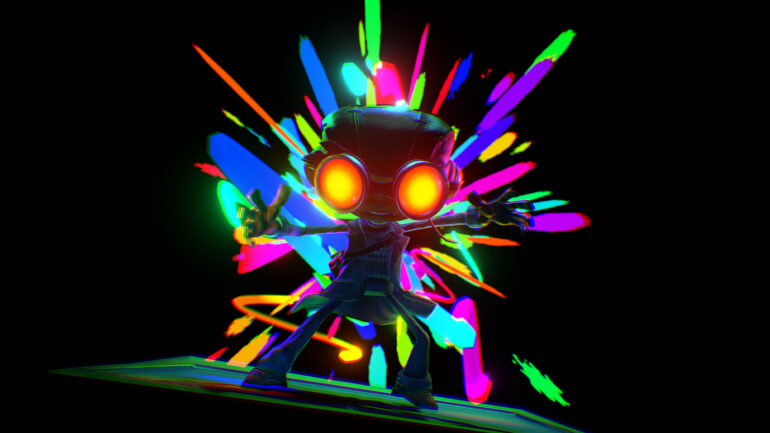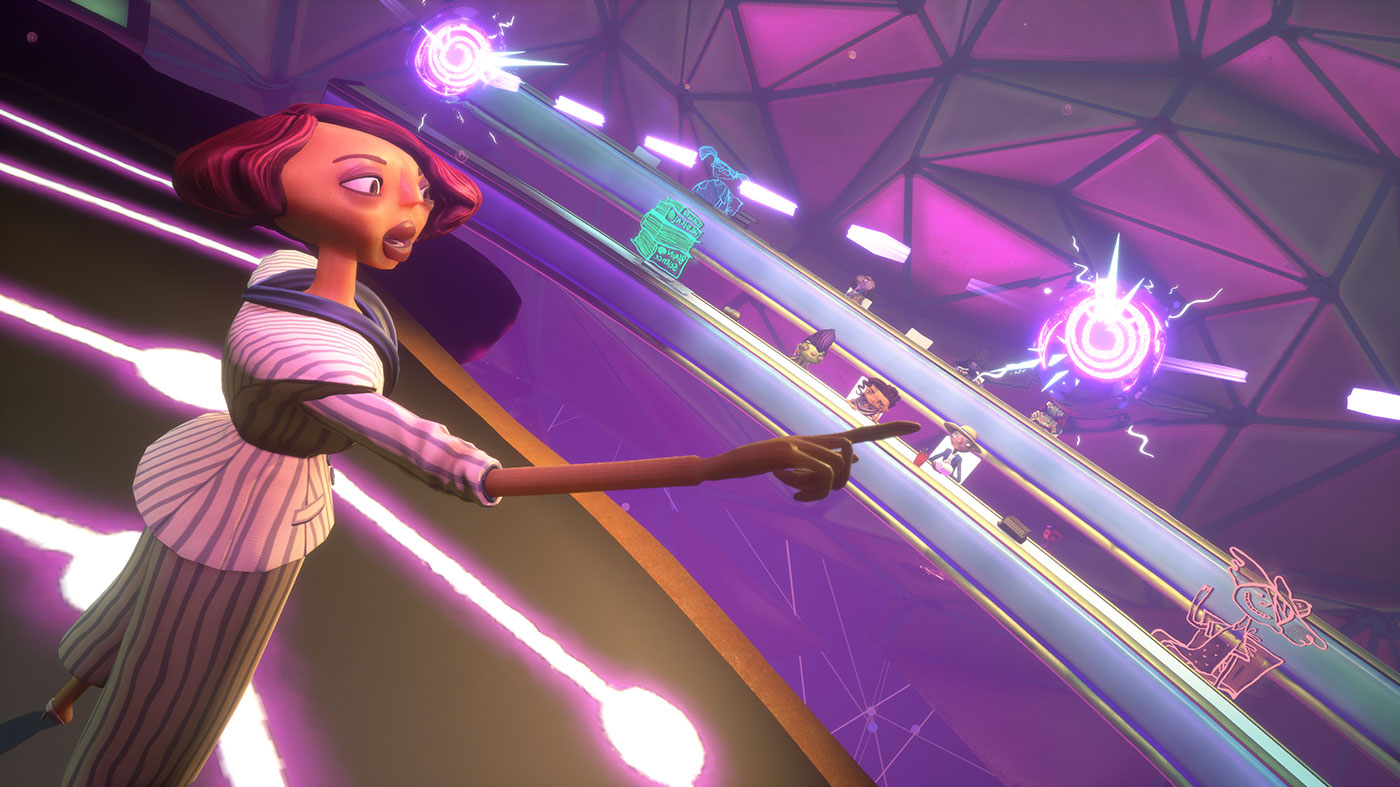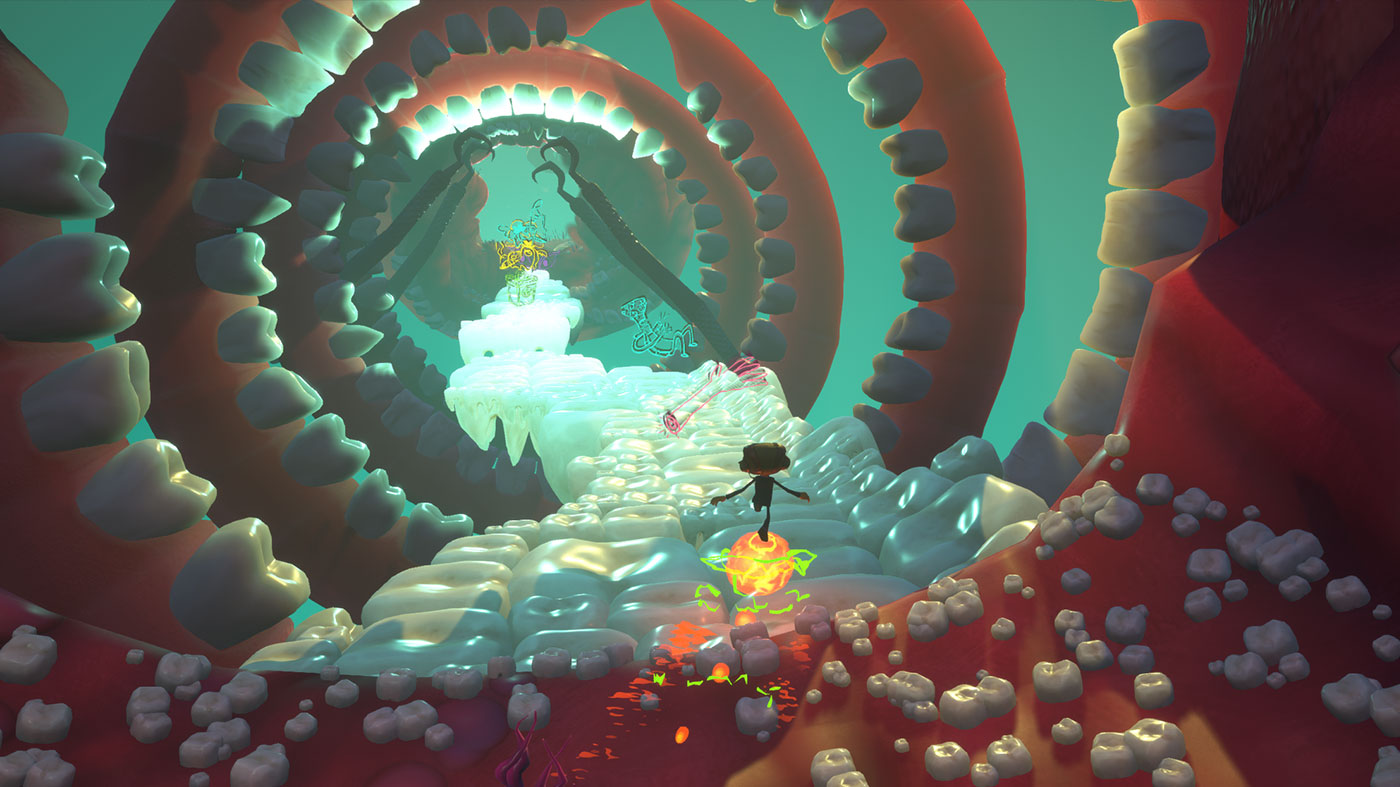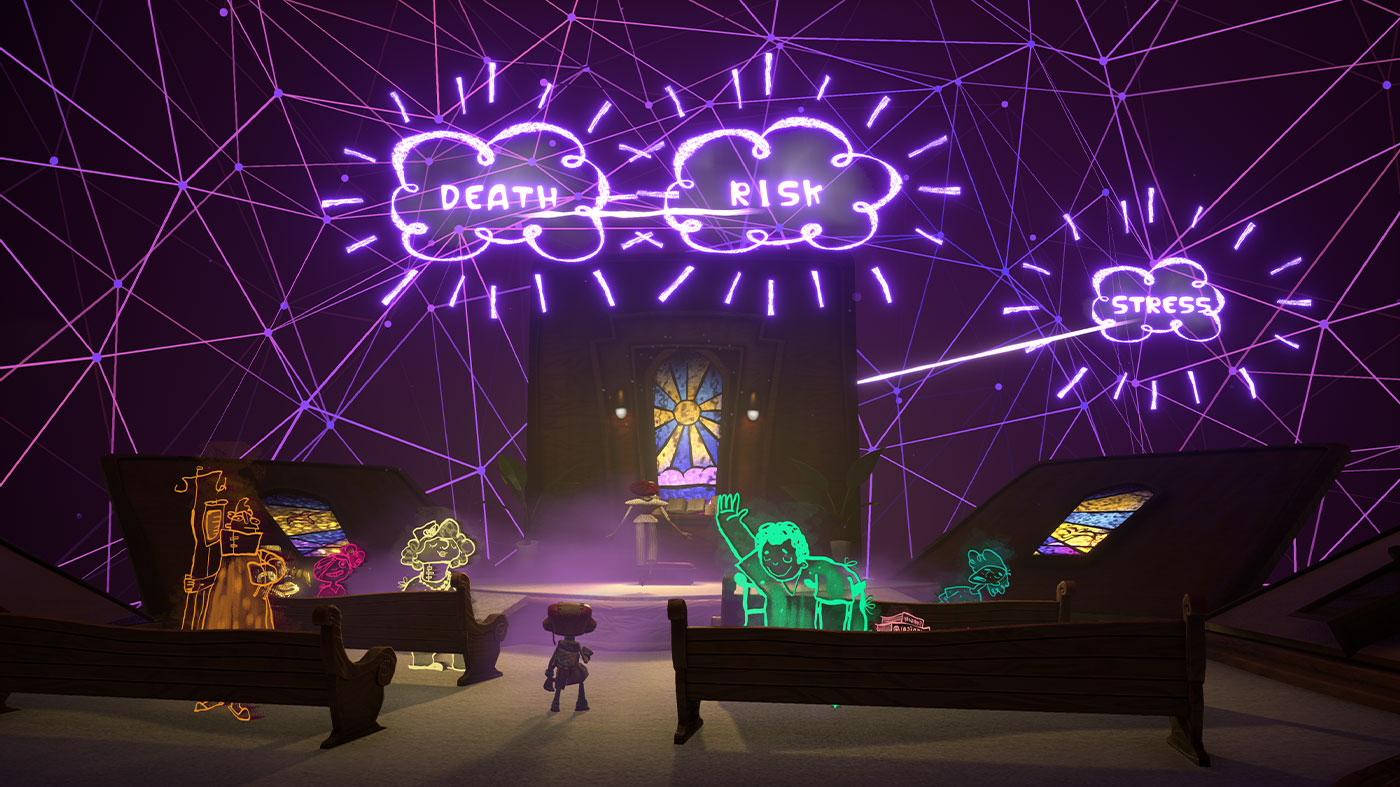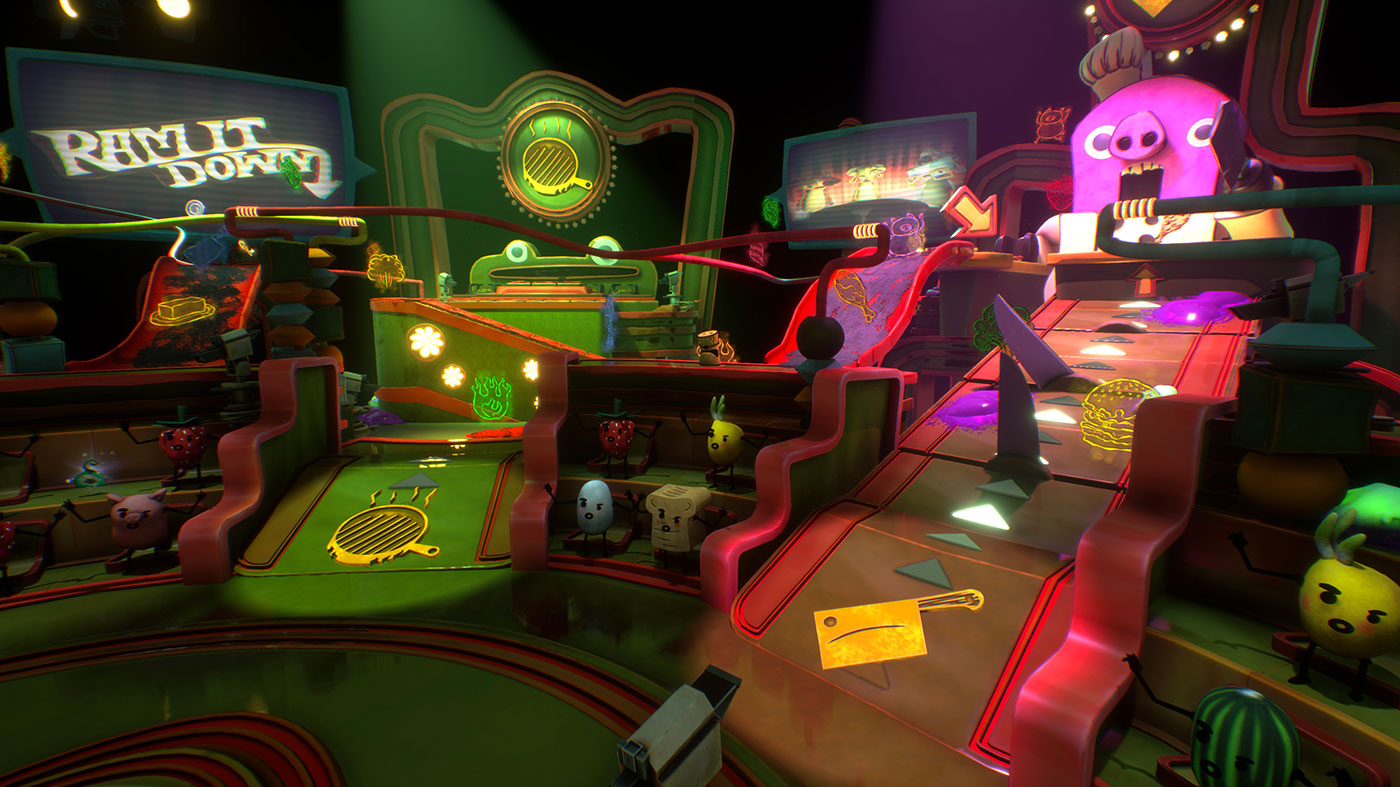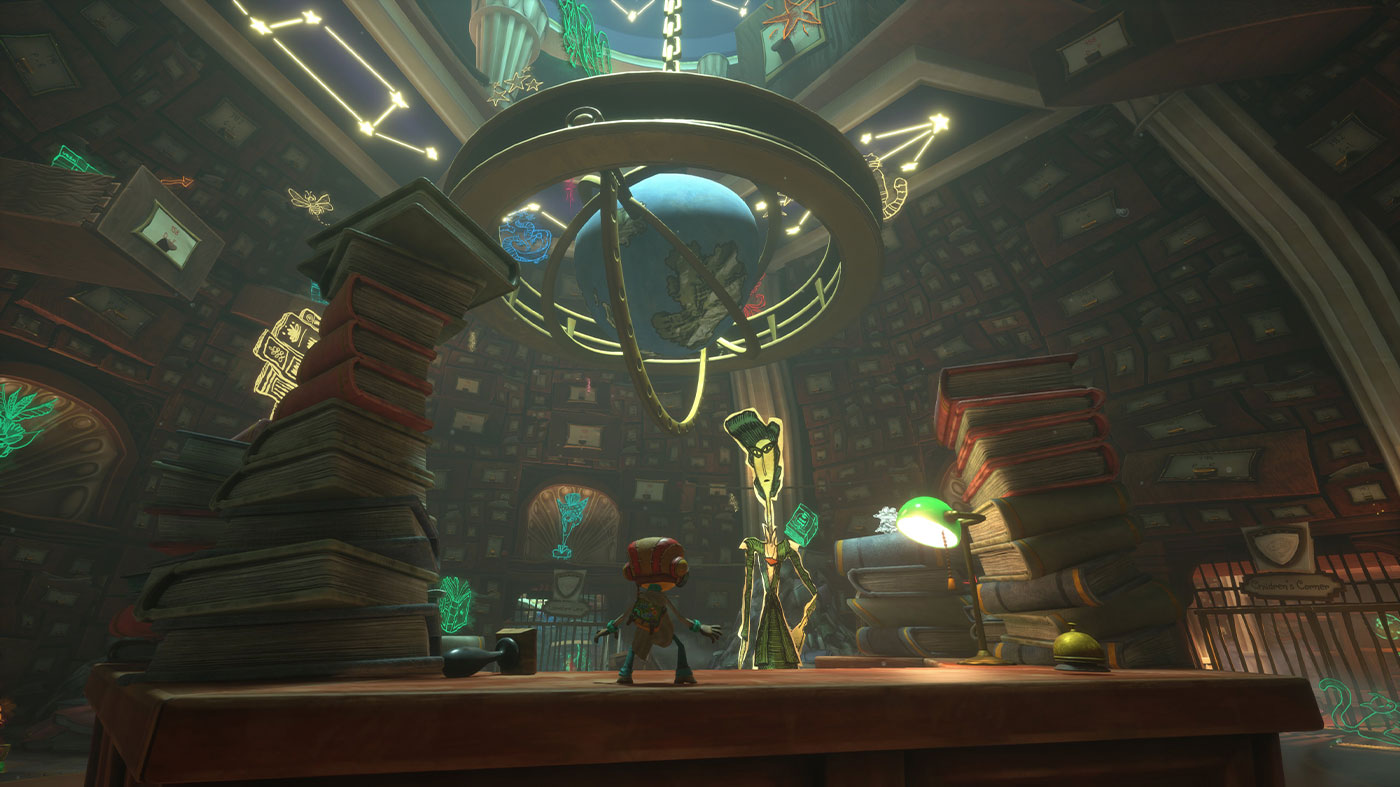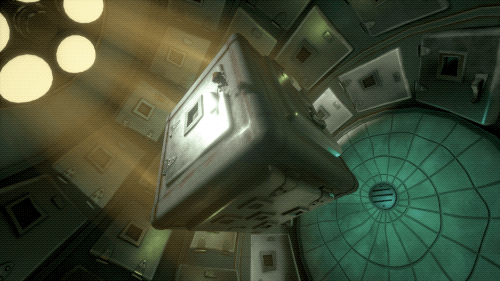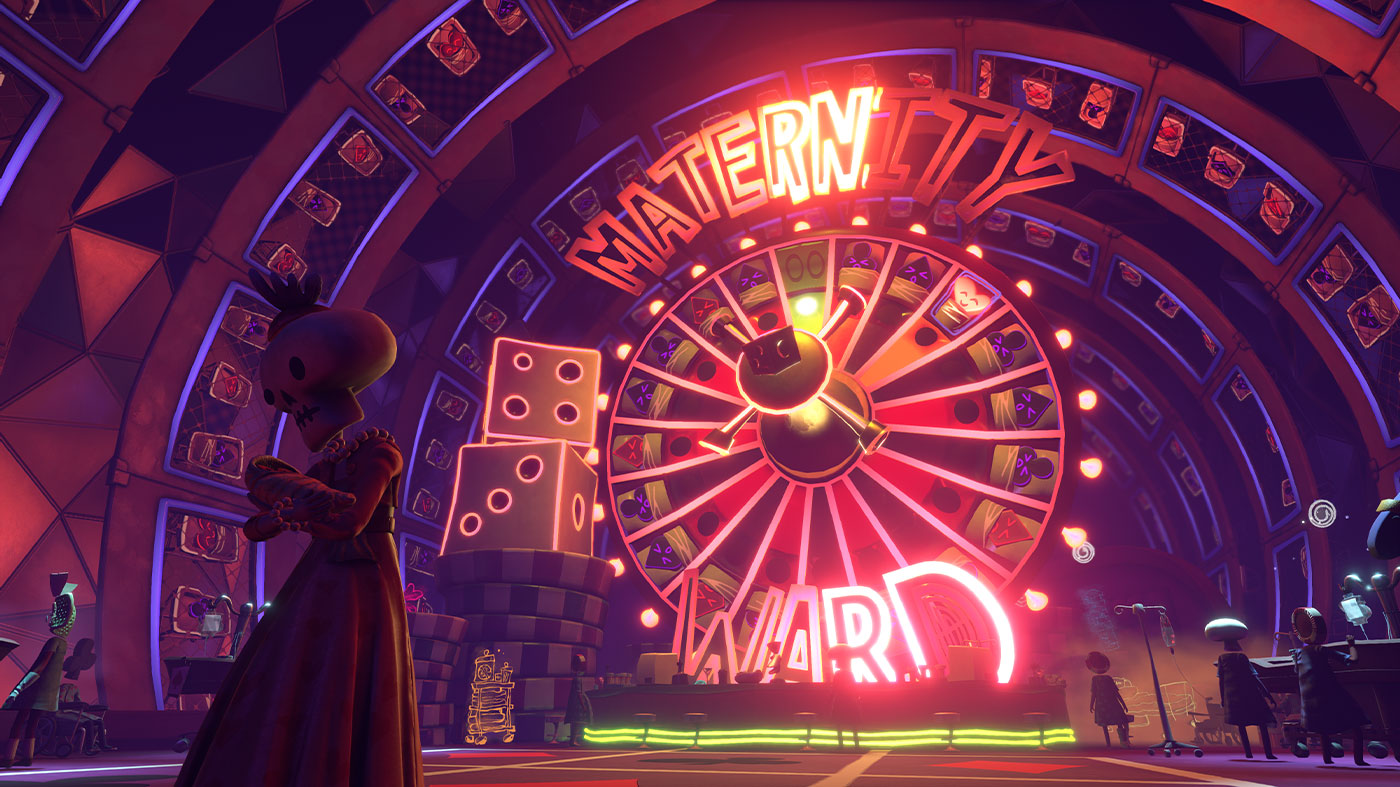Psychonauts is one of those “blind spots” in gaming for me. I’ve never spent a lot of time with the original but after spending a considerable amount of time time with Psychonauts 2, I felt oddly nostalgic whilst playing it despite not playing the original.
I was given the opportunity to try four of the brain levels, with the first two being the game’s opening. I appreciate that Psychonauts 2 from the get-go is keen to cater to its fans. I’ve no idea what has happened in the previous games, but the game starts where those games ended. Fans will undoubtedly appreciate this sense of continuity. Still, newcomers like me can also easily catch up with a video recap that’s littered with the trademark charm I’ve come to expect from Double Fine.
If I had to quickly and lazily compare Psychonauts to something as a concept, I’d say that it’s like Inception meets Inside Out. That’s an eclectic mix, for sure, but it best illustrates just what a Psychonaut does. In Psychonauts 2, like the other games, you’ll play as Raz, a Psychonaut recently inducted into the academy. After spending some time at Psychonauts Headquarters, Raz gets to a point where he realises it’s not exactly what he expected. As the game opens, he is assigned a new task from his superiors.
The new assignment sees Raz entering the mind of a twisted dentist named Caligosto Loboto. Loboto was the antagonist of the VR game, Rhombus of Ruin, and was revealed to be the one behind capturing the head of the Psychonauts. But he was hired by somebody – and it’s up to Raz and his team to enter Loboto’s mind to discover just who hired him and what they want with the Psychonauts.
It’s here where the premise of Psychonauts rears itself. Psychonauts are what they sound like – astronauts of the mind – and can jump into the brain of anybody. It’s here that they’ll gather intel, help them overcome some form of mental neuroses, or entirely rewire their thought processes to alter their behaviour in the real world. These brain levels are undoubtedly the highlight of Psychonauts. Each featuring a wildly different artistic direction and design reflects its owner.
Loboto’s is what you’d expect from a dentist. The whole level looks like a doctor’s surgery except that it’s entirely constructed out of fleshy gums, cold hard teeth, and pulsating nerves. It’s a deliciously disgusting visual feast to take in, and it reminds me of old Nickelodeon cartoons that employed similar gross-out artistic flair. Think Ren & Stimpy or Rocko’s Modern Life. Nothing is symmetrical, nothing is straight, and yet it’s still a gross world that’s oddly inviting. You just want to explore.
Following the revelation of who hired Loboto, Raz and the gang are keen to head out to the next assignment. Only that their leader won’t let them. It’s here that we’re introduced to the thought rewiring mechanic – where abstract thoughts appear in the air, and Raz must use his ability to link certain concepts together to change the behaviour of a character. In this segment, Raz must change Hollis Forsythe’s association between risk and death so that she’ll let them go out on a new mission.
Hollis is the second in command at the Psychonauts and was previously a doctor. Raz eventually rewires her mind to associate risk with money, which influences her memories of the hospital to make it appear as a casino as she becomes obsessed with gambling. As such, the next brain level is inside the hospital, which has been fashioned into a glitzy and ostentatious casino. It makes sense, given how much risk Hollis perceived to take during her years at the hospital, and it’s similarly another example of some stunning artistic direction on offer in Psychonauts 2.
The next level takes place sometime after the first two, and the segment of the preview opened with a boss battle with an enemy called the judge. It was a simple battle, mind you, but eventually lead us to find ourselves inside the mind of Compton Boole. One of the founding members of the Psychonauts, his struggle with anxiety manifests itself within his brain level as a high-tension cooking show. As Raz, you must help Compton succeed, which involves gathering the right ingredients and preparing them correctly to come out on top. It’s another bizarre segue that I didn’t quite expect from Psychonauts 2, but it’s such a clever way to conceptualise the concept of anxiety.
In this preview, the final brain level was that of Cassie O’Pia, another one of the founding members of the Psychonauts. She’s living a secluded life and having self-control issues, which manifests itself in her mind as different aspects of her personality. There’s a teacher Cassie, a writer Cassie and a dominant giant aspect – a librarian Cassie. The librarian being such a dominant aspect of Cassie’s personality means her level takes place (mostly) in a library – comprised of not only towering books and flying papers but abstract manifestations of stories too. It’s the most eclectic of all four of the brain levels I tried, without a doubt.
I’ll admit that I’ve skimmed briefly over each of these brain levels, but that’s because they’re so abstract and so surprising that it’s best to experience them fresh. Each of them is lovingly crafted by Double Fine to perfectly illustrate each of these characters’ inner turmoil. While I understand the original Psychonauts did this, Psychonauts 2 seems to do things bigger and better – doing a great job of bringing these abstract concepts to life. While I’ve little experience with the original game, if it’s as artistically rich as this one, I can see why it became such a widely beloved title.
But how does it play? Pretty well. Psychonauts 2 does feel a bit simpler than other games of its ilk, perhaps in a bid to harken back to the era the original game was released in. But the combat mechanics and enemy variety do great work in ensuring the game feels as good as it can be. Raz has many powers that have benefits if exploring or in combat, and it’s fun to try and mix them up in battle for the best results.
Telekinesis lets you throw objects, while Pyrokinesis enables you to light them on fire. Levitate is best used to improve Raz’s mobility and has some offensive properties if used correctly. Projection is new and allows Raz to draw a paper-thin minion to enter areas he can’t access himself. Mental Connection is new too, and while Raz can use it to rewire thought processes, it acts as a grappling hook in battle. Each of these abilities has three improvements that Raz can exchange for skill points too, so it’s a rather meaty affair when it comes to combat.
The enemy variety is similarly well fleshed out. Tying in perfectly with the overall concept, they’re themed after certain emotions and thought processes (mostly) seen as undesirable. “Regret” is a flying enemy that carries around a heavyweight that “weighs you down.” “Bad Idea” is a feral four-legged beast that gets in your face and explodes when it gets close. “Doubt” is a gooey creature that, when it reaches you, slows you down. The Enabler is my favourite, if only because of its name. It’s a goofy-looking cheerleader that buffs other enemies to give you a hard time. There’s even a panic attack, which is as scattered as you’d imagine it to be.
As I walk away from these four levels, having had the time to live and breathe in them all, I can’t help but be excited for Psychonauts 2. It’s got a huge amount of variety – something I’ve always appreciated in games, especially recently – and it’s one of the most conceptually unique games I’ve played in years. It’s got a nostalgic air to it, too, like a game I would’ve played growing up and found a joy to return to. But unlike in real life, when you return to something that instils so much nostalgia, Psychonauts 2 plays like a dream.
Psychonauts 2 is out on August 25th 2021 for Xbox Series X|S, Xbox One, PC, PlayStation 4, and PlayStation 5 (via backwards compatibility). It will be included at launch with Xbox Game Pass.


